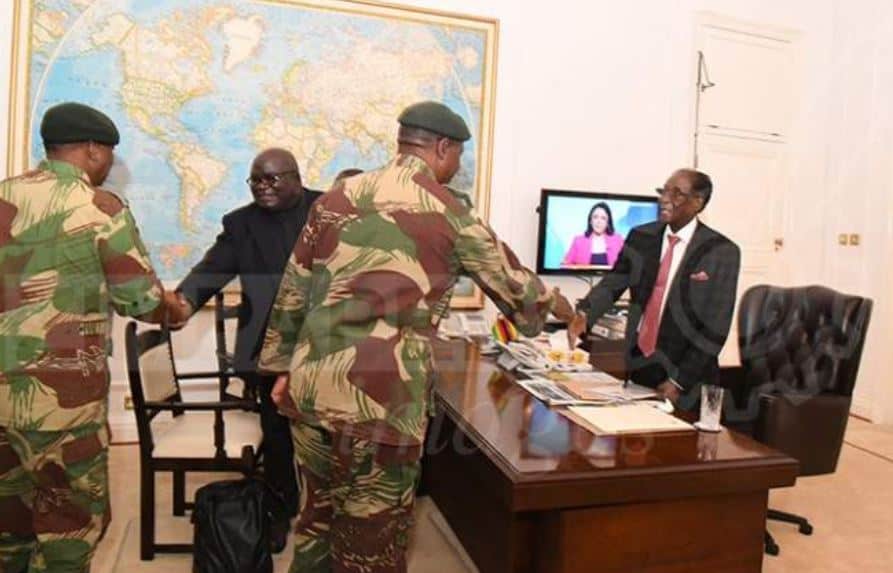Editor’s note: The opinions in this article are the author’s, as published by our guest writer, and do not represent the views of ZwNews.com
Background: In 2004, a group led by six Zanu PF provincial chairmen met at Dinyane Secondary School in Tsholotsho where an agreement was allegedly struck to install Emmerson Mnangagwa in the presidium following the death of Simon Muzenda.
Under the scheme, Mnangagwa would assume the vice-presidency and eventually the leadership of Zanu PF and Zimbabwe. The meeting was held ahead of a key Zanu PF congress in 2004. Although Mnangagwa had secured the support of six of the country’s 10 provinces, he was undone by Mugabe’s move to amend the party’s constitution to ensure that one of the party’s vice-presidents was a woman. The decision saw Joice Mujuru being appointed vice-president.
Mandi Chimene was right in 2016 when she said Mnangagwa’s Lacoste faction is a product of Tsholotsho Declaration(video).
Said Chimene:
“It started that year it was said Tsholotsho..some were fired, some were suspended; A lot of things happened in between.. now it’s back with a different name LACOSTE.”
https://www.youtube.com/watch?v=THvvlsNwAZ0
The failed Tsholotsho Declaration of 2004 that was meant to eventually topple former Zimbabwean President Robert Mugabe, and replace him with Emmerson Mnangagwa, left a sour taste to the planners, with the two (Jonathan Moyo and Mnangagwa) becoming sworn enemies.
The planned move became one of the first incidences that exposed power tussles in the ruling party, further highlighting how Mnangagwa was eager to replace Mugabe.
Mnangagwa vehemently denied taking part in the plot, and the fact that he did not travel to the place as planned exonerated him from the chop.
The Tsholotsho meeting was planned with the intention of positioning Mnangagwa to takeover power from Mugabe. However, Mnangagwa who was to be installed did not turn up, after a tip-off that Mugabe had known of the planned meeting, resulting in the two (Moyo and Mnangagwa) becoming sworn enemies.
It was therefore hard for Moyo to implicate Mnangagwa, as he was far away from the crime scene, ‘Tsholotsho.’
It is also possible that Mnangagwa who has a track record of working from below the radar snubbed the event so that his links could not be detected, like what happened recently, when the Constantino Chiwengas and team were doing the dirty work on ground, he was in self-imposed exile in South Africa.
However, that fall-out helped Mnangagwa’s plan in the long run, as Mugabe’s favoured blue-eyed boy (Moyo) later went on rampage breaking the Mugabe-Mnangagwa relationship that spanned for years since the struggle days. Mnangagwa used Moyo the way he used Grace to feed Mugabe certain calculated information in order to create ground for his long term plan, the coup.
During those days, the former Minister of Information, Moyo who was also claimed to be ZANU PF’s chief strategist had much access to Mugabe, than any other members of the cabinet, it is said he would storm into Mugabe’s office, briefing the old leader with news, developments, and global current affairs.
Moyo was said to be a news worm, who could gather most of the influential world newspapers, and surfed the internet for news that would be valuable to Mugabe, before briefing him.
Mnangagwa was aware that for his plan to succeed, he needed someone so close to Mugabe such that, the President sooner or later would react as he did on 6 November 2017, while Mnangagwa appeared a victim.
When Moyo went haywire attacking Mnangagwa left right and centre through various platform including social media, Mugabe believed him. Moyo, who confessed being the brains behind the Generation 40, also latter roped in the group’s members such as Saviour Kasukuwere, who was well favoured by the former first lady Grace Mugabe into the circle of assaulting Mnangagwa in public.
The assaults worked more for Mnangagwa, who was viewed by many as an innocent sheep being led away to the gallows for no reason.
Mnangagwa got a lot of sympathisers for that.
When he was eventually fired, many people including opposition politicians and political neutrals stood on Mnangagwa’s side of the fence, and many viewed his coup when it came, as a justifiable response to unsolicited provocation.
In the coming daily instalments I will be digging deeper into how ED managed to use various ingredients (the war vets, the masses, and the defence forces) to stage a seamless, bloodless smooth coup or ‘soft coup d’état’ as it later became to be known.
NEXT I will look at the death of Solomon ‘Rex Nhongo’ Mujuru and how it contributed to the rise of Emmerson D Mnangagwa.
Peter Nyoni is a Zimbabwean businessman. He travels frequently between Harare and South Africa













